Wow! eBook: Murach’s JavaScript and jQuery - 10 new eBooks |  |
- Murach’s JavaScript and jQuery
- Murach’s SQL Server 2012 for Developers
- Murach’s MySQL
- Murach’s HTML5 and CSS3
- Murach’s Java Programming, 4th Edition
- Web Application Development with Yii and PHP
- Cinema 4D: Beginner’s Guide
- QlikView 11 for Developers
- SAP HANA Starter
- Twitter Bootstrap Web Development
| Murach’s JavaScript and jQuery Posted: 10 Dec 2012 06:16 PM PST
Book DescriptionToday, jQuery is used by more than half of the 10,000 most-visited web sites, and jQuery is one of the technologies that every web developer should master. The trouble is that jQuery is difficult to learn, especially for programming novices. Now, this new book makes it easier than ever to learn jQuery, jQuery UI (User Interface), and jQuery Mobile. In essence, sections 2 and 3 of this book present all of the jQuery and jQuery UI skills that you need for developing professional jQuery applications. With those skills, you’ll be able to add all of the popular jQuery applications to your web pages: image swaps, image rollovers, collapsible panels, slide shows, accordions, tabs, carousels, and more. Beyond that, though, you’ll have all the skills that you need for developing unique jQuery applications of your own. But that’s just two of the five sections in the book. Because you need to know JavaScript in order to use jQuery, section 1 presents the least you need to know about JavaScript to get the most from jQuery. This is essential for programming novices, but this is also valuable for experienced programmers who may not remember how a specific JavaScript statement or method works. In short, this section makes this book a complete reference for jQuery programmers. In contrast, section 4 takes jQuery to a new level by showing you how to use Ajax and JSON to get data from a web server and add it to a web page without reloading the page. It also shows how to use Ajax and JSON with the APIs for popular web sites like Blogger, YouTube, Twitter, Flickr, and Google Maps. These are powerful skills for enhancing a web site. To complete this package, section 5 presents a complete course in jQuery Mobile, which offers an exciting, new way to develop web sites for mobile devices. Today, the best web sites are available in both full and mobile versions, so this section also shows how to use a JavaScript plugin to redirect a mobile device from the full version of a web site to its mobile version. Who this book is for
The only prerequisite is a basic familiarity with HTML and CSS. We don't expect you to code HTML and CSS, though, so we provide that code for all of the examples and exercises in the book. Then, if you ever want to learn more, please see our book, Murach's HTML5 and CSS3. Table of Contents Section 2: jQuery essentials Section 3: jQuery UI essentials Section 4: Ajax, JSON, and API essentials Section 5: jQuery Mobile essentials Resources Book Details
Related Posts
The post Murach’s JavaScript and jQuery appeared first on Wow! eBook - Blog. |
| Murach’s SQL Server 2012 for Developers Posted: 10 Dec 2012 06:08 PM PST
Book DescriptionEvery application developer who uses SQL Server 2012 should own this book. To start, it presents the essential SQL statements for retrieving and updating the data in a database. You have to master these to work effectively with database data in your applications. Then, it shows you how to design and create a database, because application developers often end up in the role of database designer and DBA. Next, it shows how to work with views, scripts, stored procedures, functions, triggers, cursors, transactions, locking, security, XML data, and BLOB data with FILESTREAM storage. These features allow you to create database applications that are thoroughly professional. Finally, this book shows how to use the CLR integration feature and SQL Server Data Tools (SSDT), so you can use Visual Studio to code stored procedures, functions, triggers, aggregate functions, and user-defined types in C# or Visual Basic. Who this book is for That’s why developers often code SQL statements that don’t perform as efficiently as they ought to. That’s why they aren’t able to code some of the queries that they need for their applications. That’s why they don’t take advantage of all the features that SQL Server has to offer. And that’s why this book should be required reading for every application programmer who uses SQL Server. Beyond that, this is the right first book for anyone who wants to become a database administrator. Of course, if you want to become a DBA, you’ll need to continue your study of SQL Server’s advanced features after you finish this book…but you’ll be well-prepared to go on. Table of Contents Section 2: The essential SQL skills Section 3: Database design and implementation Section 4: Advanced SQL skills Section 5: CLR integration Resources Book Details
Related Posts
The post Murach’s SQL Server 2012 for Developers appeared first on Wow! eBook - Blog. |
| Posted: 10 Dec 2012 04:37 PM PST
Book DescriptionThis practical, hands-on training and reference guide is perfect for developers who need to learn MySQL. Written by Joel Murach, the author of bestselling “Java Servlets and JSP” and “PHP and MySQL” books, this is exactly the database book that web developers should have on their desks. As you would expect, this book shows how to code all of the essential SQL statements for creating and working with a MySQL database. But beyond that, this book also shows how to design a database, including how to use the graphical MySQL Workbench to create an EER model. It shows how to take advantage of the MySQL enhancements that aren’t covered in older books, such as foreign keys, transactions, stored procedures, stored functions, triggers, and events. It even presents a whole section on database administrator (DBA) skills, including how to secure and back up databases. And like all Murach books, it uses the distinctive “paired pages” format, which breaks the material into manageable skills to speed up both learning and reference. A great help for MySQL users at any level. Who this book is for
This book is also a good choice for anyone who wants to learn standard SQL. In fact, 90% of what you learn here can be transferred to another database management system such as Oracle or SQL Server. Finally, this is the right first book for anyone who wants to become a database administrator. Although it doesn’t cover all the issues that DBAs have to deal with, it gives you the solid foundation in database design and management that you need to build on. Table of Contents Section 2: The essential SQL skills Section 3: Database design and implementation Section 4: Stored program development Section 5: Database administration Book Details
Related Posts
The post Murach’s MySQL appeared first on Wow! eBook - Blog. |
| Posted: 10 Dec 2012 04:30 PM PST
Book DescriptionHTML5 and CSS3 (the latest standards for HTML and cascading style sheets) are packed with coding options that make it easier than ever to create web pages with the features users want today, from an up-to-date look and feel…to immediate validation of user entries…to audio and video samplings. At the same time, there are still older browsers and millions of existing web sites that require you to integrate HTML5 and CSS3 features with the earlier standards. So how do you learn all this? This book is exactly the practical approach you need. It teaches you how to use HTML5 and CSS3 the way they were meant to work, with HTML5 to provide the page content and CSS3 to format the content and lay out the pages. But it also teaches you how to use the HTML5 and CSS3 features alongside the earlier standards to ensure that your pages will work for the widest possible audience. So if you’re going to be developing web pages…whether you’re a web designer, a JavaScript programmer, a server-side programmer, or a rookie…this book is for you. It begins with a 6-chapter, quick-start course to get you working at the professional level right away. Soon, you’ll be using HTML5 features…like the semantic tags that improve the structure of your content and your search engine rankings…along with CSS3 features…like text and border shadows, rounded corners, and background gradients that give your pages a cutting-edge feel. And you’ll know how and when to blend them with the earlier HTML and CSS code. After that quick-start, you’ll learn how to make your pages work better for your site visitors by enhancing them with audio and video files…using the jQuery Mobile library to deliver content on mobile devices…adding jQuery routines for special effects like slide shows and accordions…and using JavaScript to provide for features like geolocation, web storage, canvas, and drag-and-drop…the kinds of skills that go far beyond what you’ll find in other introductory books. Who this book is for
But it’s also for web programmers, whether they’re working in JavaScript or using a server-side language like PHP, ASP.NET, or Java servlets and JSPs. Web programmers are often surprised at the intricacies involved in writing good HTML and CSS code, yet understanding that piece makes them more effective members of the development team. Table of Contents Section 2: More HTML and CSS skills as you need them Section 3: JavaScript and jQuery skills Section 4: How to design and deploy a web site Resources Book Details
Related Posts
The post Murach’s HTML5 and CSS3 appeared first on Wow! eBook - Blog. |
| Murach’s Java Programming, 4th Edition Posted: 10 Dec 2012 04:24 PM PST
Book DescriptionDevelopers often tell me they wish they’d found our Java book first, before spending time and money on others. Here are a few of the reasons why I believe this book will work equally well for you:
Who this book is for
If you’re new to programming, the prerequisites are minimal. You just need to be familiar with the operation of the platform that you’re using. That means you should know how to perform tasks like opening, saving, printing, closing, copying, and deleting files. Table of contents Section 2: Object-oriented programming with Java Section 3: More Java skills Section 4: GUI programming with Swing Section 5: Data access programming with Java Section 6: Advanced Java skills Resources Book Details
Related Posts
The post Murach’s Java Programming, 4th Edition appeared first on Wow! eBook - Blog. |
| Web Application Development with Yii and PHP Posted: 10 Dec 2012 02:10 AM PST
Book DescriptionThis book is a step by step tutorial in developing a real-world application using the incremental and iterative approach to software development. You learn about agile software development by leaning on the agile nature of the Yii application development framework. You touch on each aspect of the software development lifecycle by building a project task management application from concept through production deployment. After a brief, general introduction to the Yii framework and outlining the software development approach taken throughout the book, the chapters break down in the same way as software development iterations do in real-world projects. After the 1st iteration, you will have a working and tested application with a valid, tested connection to a database. In the 2nd and 3rd iterations, we flesh out our main database entities and domain object model and become familiar with Yii’s object-relational-mapping (ORM) layer, Active Record. We also learn how to lean on Yii’s auto-generation tools to automatically build our create/read/update/delete (CRUD) functionality against our newly created model. These iterations also focus on how Yii’s form validation and submission model works. By the end of the third iteration you will have a working application that allows you to mange projects and issues (tasks) within those projects. The 4th and 5th iterations are dedicated to user management. We learn about the built-in authentication model within Yii to assist in application login and logout functionality. We then dive into the authorization model, first taking advantage of a Yii’s simple access control model, then implementing the more sophisticated role-based access control (RBAC) framework that Yii provides. What you will learn from this book
Approach Who this book is for Book Details
Related Posts
The post Web Application Development with Yii and PHP appeared first on Wow! eBook - Blog. |
| Posted: 10 Dec 2012 02:08 AM PST
Book Description3D animation offers a versatile way to bring ideas to life. With this guide, you’ll learn how to take your vision and turn it into beautiful images With “Cinema 4D”, you can quickly and easily bring your visions to life. This beginner’s guide will walk you through creating and animating a 3D scene, with tips and techniques for everything from photorealistic rendering to motion graphics. “Cinema 4D” enables everyone from professionals to hobbyists to create stunning 3D animations. This book will walk you through all the steps of creating an interior flythrough of an office: creating a 3D structure, adding materials and lighting, animating, and rendering. Then, you’ll explore additional features through a series of mini projects: creating motion graphics, exporting a stylized non-realistic image, adding hair and creating cloth. You’ll learn how to connect pieces that all work together by exploring node-based programming in Xpresso, then wrap everything up with an introduction to compositing in Adobe After Effects. What you will learn from this book
Approach Who this book is written for Book Details
Related Posts
The post Cinema 4D: Beginner’s Guide appeared first on Wow! eBook - Blog. |
| Posted: 10 Dec 2012 02:05 AM PST
Book DescriptionBusiness Intelligence technologies are a must-have in every business to make informed decisions and keep up-to speed with the ever-evolving markets. QlikView's disruptive technology makes it a key player and leader in the industry; with its flexibility and powerful analytics environment, building QlikView apps can be mastered by both, business users as well as developers. This book will help you learn QlikView Development from a basic to a practitioner level using a step-by-step approach in a practical environment, and apply proven best practices on each topic. Throughout the book, we will build a QlikView app based on real data about Airline Operations that will help “HighCloud Airlines” make informed business decisions and analysis-guided strategies. HighCloud Airlines executives are evaluating if entering the US market is a good strategy and, if so, which line of business should they focus their investments on; they need QlikView to make the best decision. The application will be evolving chapter by chapter, along with your skills, going from a simple proof of concept to creating a Data Model, adding a custom style, building a Dashboard and handling and manipulating the source data via script. We will meet the “HighCloud Airlines” requirement by using many different data visualization objects and time-saving techniques. The whole application uses real data taken from the Bureau of Transportations statistics of the US and encompasses the operations of Airlines both domestic and international. With three years worth of data, you will help HighCloud Airlines discover where people travel the most, which are the Carriers with the most market share, what is the average load factor per airline, which aircraft is the most used to perform flights, which are the busiest airports, and a whole universe of new insights. What you will learn from this book
Approach Who this book is for You should know the basics of business intelligence before you pick up this book. This book covers QlikView Desktop Personal Edition. Deployments to QlikView Server/Publisher are out of scope for this book. Book Details
Related Posts
The post QlikView 11 for Developers appeared first on Wow! eBook - Blog. |
| Posted: 10 Dec 2012 02:02 AM PST
Book DescriptionSAP HANA is SAP’s in-memory database technology, and the focal point of their next generation strategy. Using column-based storage to provide highly compressed and rapidly accessed data, a SAP HANA application can be several hundred times faster than the same application on previous generation database technology. SAP HANA Starter is a hands-on book, taking you step-by-step through the creation of your first SAP HANA application. You will discover the building blocks that SAP HANA provides, and use them to create a robust reporting application. More advanced features are shown, allowing you to transform your reporting application into a yearly sales increase simulator. Finally, you’ll learn how to access your SAP HANA application from Microsoft Excel. Using easy to understand examples and logical progression, you will build your first SAP HANA application – a sales amount simulator, from scratch. Starting with the creation of tables in the database, and using the modeling building blocks provided by the SAP HANA Studio, you will first see how to build a reporting application on these tables, and then extend this application to allow sales increase simulation, finally making the data available to others in Microsoft Excel. What you will learn from this book
Approach Who this book is written for Book Details
Related Posts
The post SAP HANA Starter appeared first on Wow! eBook - Blog. |
| Twitter Bootstrap Web Development Posted: 10 Dec 2012 01:59 AM PST
Book DescriptionTwitter Bootstrap is by far the most popular of all front-end frameworks. It has earned its position by providing expertly-crafted, community-tested solutions for some of the thorniest problems of contemporary web design, equipping developers to accomplish difficult tasks with ease and normal tasks with greater speed. Twitter Bootstrap Web Development How-To walks you step-by-step from Bootstrap basics to the creation of a fully-responsive, JavaScript-enhanced, multi-page website. After this quick and dirty Bootstrap bootcamp, you’ll not only be building serious sites, but you'll be equipped to dive into the rest of what Twitter Bootstrap has to offer. The content of the book is up to date with version 2.1 of Twitter Bootstrap. Bringing you from zero to pro in record time, this book will start you off with Twitter Bootstrap’s excellent responsive grid system. From the basics, you’ll move on to more complex layouts with media grids and tables. You’ll learn to control Bootstrap’s navbar, adding drop-down menu items and configuring it to adapt beautifully to small screens. You’ll utilize Bootstrap’s jQuery plugins to add dynamic tabs and a beautiful homepage slideshow. You’ll also walk through the steps of uploading your files, testing your site across desktop and mobile browsers, and optimizing your site files for improved performance before final launch. What you will learn from this book
Approach Who this book is written for Book Details
Related Posts
The post Twitter Bootstrap Web Development appeared first on Wow! eBook - Blog. |
| You are subscribed to email updates from Wow! eBook - Blog To stop receiving these emails, you may unsubscribe now. | Email delivery powered by Google |
| Google Inc., 20 West Kinzie, Chicago IL USA 60610 | |

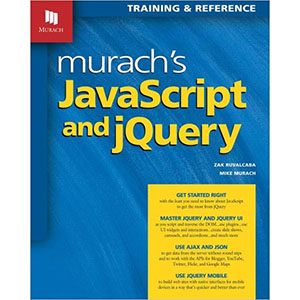
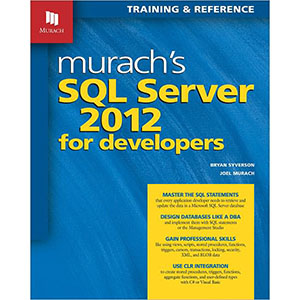
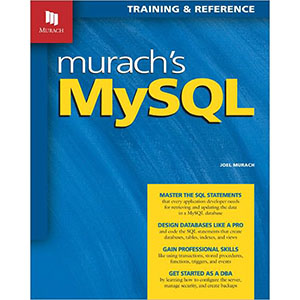
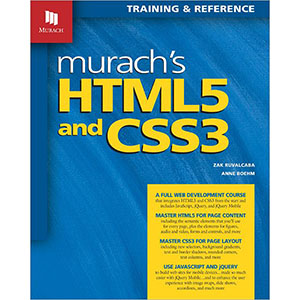


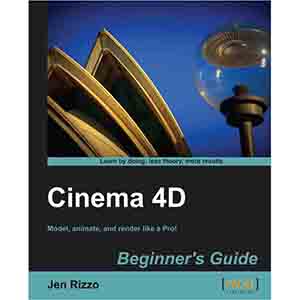
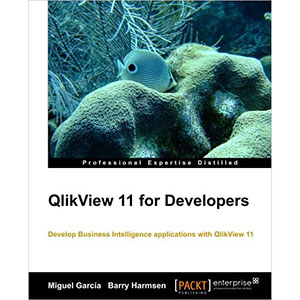
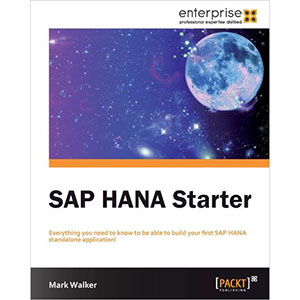
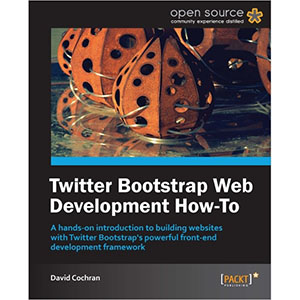
Interesting Article
BalasHapusJQuery Training | Online Javascript Training
Wow. This really made my day. Thanks a lot!
JavaScript Training Courses | Javascript Online Training
Excellent post...! It is very helpful for developing my knowledge and Keep it up...oracle training in chennai
BalasHapusInfycle Technologies, the No.1 software training institute in Chennai offers the No.1 Selenium course in Chennai for tech professionals, freshers, and students at the best offers. In addition to the Selenium, other in-demand courses such as Python, Big Data, Oracle, Java, Python, Power BI, Digital Marketing, Cyber Security also will be trained with hands-on practical classes. After the completion of training, the trainees will be sent for placement interviews in the top companies. Call 7504633633 to get more info and a free demo.
BalasHapusVery Informative blog thank you for sharing. Keep sharing.
BalasHapusBest software training institute in Chennai. Make your career development the best by learning software courses.
best msbi training institute in chennai
devops training in chennai
php training in chennai